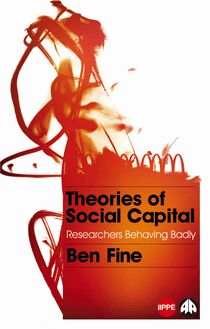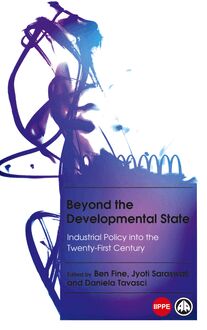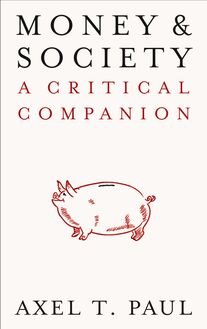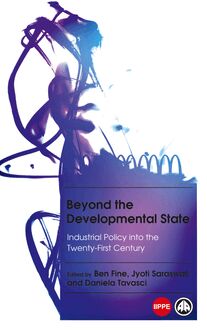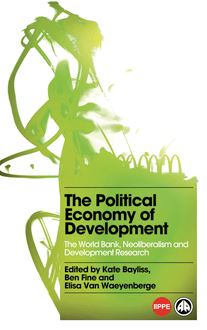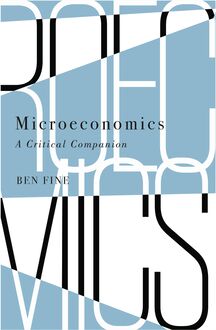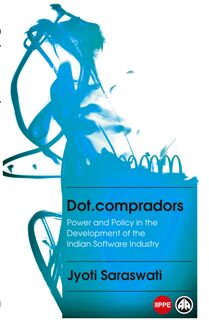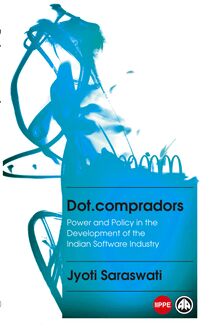Microeconomics , livre ebook
152
pages
English
Ebooks
2016
Vous pourrez modifier la taille du texte de cet ouvrage
Obtenez un accès à la bibliothèque pour le consulter en ligne En savoir plus
Découvre YouScribe en t'inscrivant gratuitement
Découvre YouScribe en t'inscrivant gratuitement
152
pages
English
Ebooks
2016
Vous pourrez modifier la taille du texte de cet ouvrage
Obtenez un accès à la bibliothèque pour le consulter en ligne En savoir plus
Publié par
Date de parution
20 avril 2016
Nombre de lectures
4
EAN13
9781783717804
Langue
English
From the culmination of 40 years of teaching, research and policy advice on political economy, Ben Fine critically exposes the methodological and conceptual content of dominant microeconomic models without sacrificing the technical detail required for those completing a first degree in economics or entering postgraduate study. The result is a book which is sure to establish a strong presence on undergraduate reading lists and in comparative literature on the subject.
List of Boxes
List of Diagrams
Preface, Preliminaries and Acknowledgements
1. Locating Microeconomics
2. Elusive Consumers and the Theory of Demand
3. From Production to Supply and Beyond to General Equilibrium?
4. Competition Is as Competition Does?
5. Production Function Rules, Not OK
6. Labour Markets
7. Whither Microeconomics: Upside-Down or Inside-Out?
References
Index
Publié par
Date de parution
20 avril 2016
Nombre de lectures
4
EAN13
9781783717804
Langue
English
Microeconomics
Political Economy and Development
Published in association with the International Initiative for Promoting Political Economy (IIPPE)
Edited by Ben Fine (SOAS, University of London) Dimitris Milonakis (University of Crete)
Political economy and the theory of economic and social development have long been fellow travellers, sharing an interdisciplinary and multidimensional character. Over the last 50 years, mainstream economics has become totally formalistic, attaching itself to increasingly narrow methods and techniques at the expense of other approaches. Despite this narrowness, neoclassical economics has expanded its domain of application to other social sciences, but has shown itself incapable of addressing social phenomena and coming to terms with current developments in the world economy.
With world financial crises no longer a distant memory, and neoliberal scholarship and postmodernism in retreat, prospects for political economy have strengthened. It allows constructive liaison between the dismal and other social sciences and rich potential in charting and explaining combined and uneven development.
The objective of this series is to support the revival and renewal of political economy, both in itself and in dialogue with other social sciences. Drawing on rich traditions, we invite contributions that constructively engage with heterodox economics, critically assess mainstream economics, address contemporary developments and offer alternative policy prescriptions.
Also available
Theories of Social Capital:
Researchers Behaving Badly
Ben Fine
The Political Economy of Development:
The World Bank, Neoliberalism and Development Research
Edited by Kate Bayliss, Ben Fine and Elisa Van Waeyenberge
Dot.compradors:
Crisis and Corruption in the Indian Software Industry
Jyoti Saraswati
Beyond the Developmental State:
Industrial Policy into the Twenty-First Century
Edited by Ben Fine, Jyoti Saraswati and Daniela Tavasci
Macroeconomics:
A Critical Companion
Ben Fine and Ourania Dimakou
Microeconomics
A Critical Companion
Ben Fine
First published 2016 by Pluto Press
345 Archway Road, London N6 5AA
www.plutobooks.com
Copyright © Ben Fine 2016
The right of Ben Fine to be identified as the author of this work has been asserted by him in accordance with the Copyright, Designs and Patents Act 1988.
British Library Cataloguing in Publication Data
A catalogue record for this book is available from the British Library
ISBN 978 0 7453 3602 2 Hardback
ISBN 978 0 7453 3607 7 Paperback
ISBN 978 1 7837 1779 8 PDF eBook
ISBN 978 1 7837 1781 1 Kindle eBook
ISBN 978 1 7837 1780 4 EPUB eBook
This book is printed on paper suitable for recycling and made from fully managed and sustained forest sources. Logging, pulping and manufacturing processes are expected to conform to the environmental standards of the country of origin.
Typeset by Stanford DTP Services, Northampton, England
Simultaneously printed in the European Union and United States of America
Contents
List of Boxes
List of Diagrams
Preface, Preliminaries and Acknowledgements
1 Locating Microeconomics
1.1 Overview
1.2 Microeconomics as History of Economic Thought
1.3 From Marginalist Revolution ...
1.4 ... Through Methodology ...
1.5 ... To Implosion onto TA 2
1.6 From Implosion onto TA 2 to Explosion into Economics Imperialism
1.7 From Old to New Economics Imperialism
1.8 Further Thoughts and Readings
1.9 Appendix: Can the Mainstream be Defended?
2 Elusive Consumers and the Theory of Demand
2.1 Overview
2.2 The Reduced Consumer
2.3 How Consumer Theory Got its Spots
2.4 Consumer Theory Hoist by its Own Petard
2.5 Consumer Theory as Economics Imperialism
2.6 From Consumer Theory to Systems of Provision
2.7 Broader Implications
2.8 Further Thoughts and Readings
3 From Production to Supply and Beyond to General Equilibrium?
3.1 Overview
3.2 Production and Cost Functions Rule, OK?
3.3 General Equilibrium: A Fantasy Glass, Half Empty or Half Full?
3.4 Further Thoughts and Readings
4 Competition Is as Competition Does?
4.1 Overview
4.2 Perfect Entry and Exit, and Monopoly
4.3 From Monopoly to Oligopoly
4.4 A Little Game Theory
4.5 A Simple Model of Entry Deterrence
4.6 Collusion
4.7 Discriminating Models
4.8 Path Dependence
4.9 The Coase ‘Theorem’
4.10 Towards Alternatives
4.11 Further Thoughts and Readings
5 Production Function Rules, Not OK
5.1 Overview
5.2 The Aggravating Aggregate Production Function
5.3 Total Factor Productivity
5.4 Measuring Something Called TFP in Practice
5.5 From Mismeasurement to Misinterpretation
5.6 Further Thoughts and Readings
6 Labour Markets
6.1 Overview
6.2 From Labour as Fish ...
6.3 ... To Human Capital Theory
6.4 Imperfect Labour Markets
6.5 Risk and Uncertainty
6.6 Debating Minimum Wages
6.7 Towards Alternatives: Segmented Labour Markets
6.8 Further Thoughts and Readings
7 Whither Microeconomics: Upside-Down or Inside-Out?
7.1 Overview
7.2 From Microeconomics to Industrial Policy
7.3 Further Thoughts and Readings
References
Index
List of Boxes
3.1 Lagrange optimisation
3.2 Pareto efficiency
4.1 What is an annuity worth?
4.2 Contestability
4.3 Elasticities
4.4 The Cobb-Douglas functional form
4.5 Elasticity of substitution
4.6 The Herfindahl index
4.7 QWERTY as path dependence
5.1 Returns to scale
5.2 The constant elasticity of substitution function
6.1 Moral hazard, adverse selection and beyond
6.2 Measuring risk aversion
List of Diagrams
2.1 Is this an isoquant or an indifference curve?
2.2 Giffen good
2.3 The complete and closed system of neoclassical consumer theory
3.1 The complete and closed system of neoclassical producer theory
3.2 Robinson’s utility
3.3 Robinson’s production
3.4 Robinson’s optimum
3.5 General equilibrium with (some) increasing returns
3.6 Pareto efficiency without general equilibrium
4.1 AC = MC at minimum AC
4.2 The prisoners’ dilemma
4.3 The siblings’ dilemma
4.4 The assurance game
4.5 Deterred entry, or not?
4.6 Elasticity of substitution
4.7 Perfect substitutes and complements
5.1 Production functions: false intuitions?
5.2 Shift of or along the production function?
5.3 Technique factor price frontiers
5.4 Economy factor price frontier and switch point
5.5 Economy factor price frontier
5.6 Reswitching
5.7 Value of capital
5.8 Value of capital constant as output changes with no technical change 126
6.1 Efficiency wages
6.2 The efficient wage: a'(w) = a(w)/w
6.3 Utility function representation of risk preferences
Preface, Preliminaries and Acknowledgements
Having taught microeconomics at graduate level under various guises for more than 40 years, I have finally succumbed to the temptation to put on paper some of the content of what I have taught. This book represents the results for the microeconomics, and the counterpart volume, Macroeconomics: A Critical Companion , is published simultaneously. As with the lectures themselves, this has presented a number of difficulties. First, students and potential readers arrive with very different backgrounds. Most might have an undergraduate degree in economics and have covered the elementary principles of the mainstream and more. If so, and if they have retained that knowledge, some of what follows might be thought of as unnecessary. Nonetheless, it is almost inevitable that reviewing such material is more than worthwhile in light of doing so from a critical perspective. It is always handy to target material over which, from my own experience as teacher, students tend to stumble either in attempting to understand what is going on or in moving from one step to the next in algebraic derivation. To this end, I have provided a number of boxes dedicated to particular topics to supplement the text. Some are technical, some are not, but the material is hopefully laid out in a way that is clear and easy to follow. Second, for many students microeconomics is technically demanding in terms of mathematical requirements. So, it is necessary to deploy and command technical material, both as skill acquisition in and of itself and to gain a sense of the nature of microeconomics on the technical terms on which it is so dependent. As a result, many microeconomics textbooks are disproportionately mathematical in content, difficult to follow, and negligent of the motivation for, and significance of, one damn model after another. The difficulty here is to offer some select technical material without it becoming a goal in its own right, at the expense of the substantive content.
Third, microeconomics now covers a vast and growing weight of subject matter, both within and between topics. As with technical material, a judicious choice has to be made across the breadth and depth of material presented.
Fourth, unlike most other texts on microeconomics, the critical stance adopted here leaves open the option of presenting some alternatives to the mainstream. Again, this is done selectively for illustrative purposes but without pursuing issues too far, although some further issues and readings are raised at the end of each chapter (apart from some indulgent referencing of my own work, the presumption is that, given the capacity of the Internet, it is both desirable and possible for students to find further readings for themselves of the sort that best match their interests and capabilities). In short, the goal is to introduce students to alternative ways of thinking, often ways that were the orthodoxy but have now been discouraged and excluded from students’ previous training, often rendering the idea of alternatives and alternative thinking both counterintuitive and subject to resistance if not incomprehension. This too is uneven across the chapters, with greater or lesser emphasis on the mainstream, the technic
